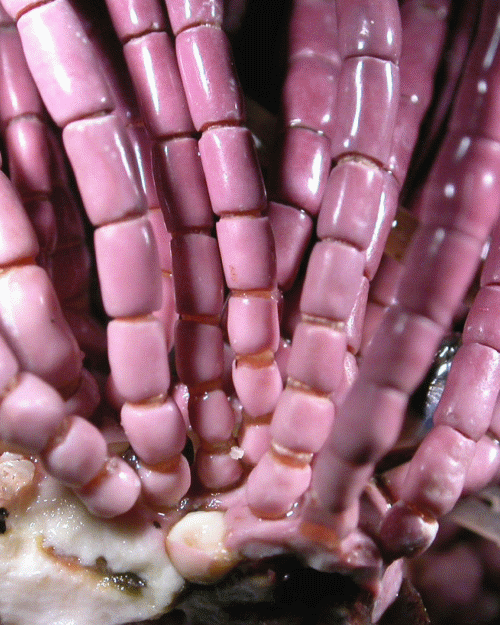But Lignin, one of the chemical underpinnings vital to the self-supporting nature of land plants and thought unique to them, has now been found in marine algae by a team of researchers that include scientists at Stanford University and the University of British Columbia. Lignin, a principal component of wood, is a glue-like substance that helps fortify cell walls and is instrumental in the transport of water in many plants.
The team says this finding may provide a new perspective on the early evolution of lignified support tissues, such as wood, on land, since the seaweed tissues that are most stressed by waves crashing on shore appear to contain the most lignin, possibly contributing to mechanical support, Martone said.
It may also affect one of the ways land plants have traditionally been distinguished from aquatic algae in textbooks: by the presence of lignin. It is also of interest to biofuel researchers since lignin binds cell walls and prevents the extraction of cellulose, a key component in biofuel production.

Like many land plants, this red seaweed produces lignin, a primary component of wood.
Photo credit: Kathy Ann Miller
In the study, lead author Patrick Martone and colleagues describe using chemical and microscopic anatomy techniques to identify and localize lignin within cell walls of a red alga that thrives along the wave-swept California coast. Martone conducted the work described in the paper while a graduate student and postdoctoral researcher in the laboratory of co-author Mark Denny, a professor of biology at Stanford's Hopkins Marine Station.
"All land plants evolved from aquatic green algae, and scientists have long believed that lignin evolved after plants took to land as a mechanical adaptation for stabilizing upright growth and transporting water from the root," said Martone, an assistant professor in the UBC Department of Botany, where he is continuing his work on lignin.
"Because red and green algae likely diverged more than a billion years ago, the discovery of lignin in red algae suggests that the basic machinery for producing lignin may have existed long before algae moved to land."
Alternatively, algae and land plants may have evolved the identical compound independently, after they diverged.
"The pathways, enzymes and genes that go into making this stuff are pretty complicated, so to come up with all those separately would be really, really amazing," Denny said. "Anything is possible, but that would be one hell of a coincidence."
Funded primarily by the U.S. National Science Foundation and the U.S. Department of Energy, Martone said the research team has started looking for billion-year-old lignin genes that might be shared among land plants and red algae and has started exploring whether lignin exists in other aquatic algae and what role it plays in the evolution and function of aquatic plants.
Article: Patrick T. Martone, José M. Estevez, Fachuang Lu, Katia Ruel, Mark W. Denny, Chris Somerville, John Ralp, 'Discovery of Lignin in Seaweed Reveals Convergent Evolution of Cell-Wall Architecture', Current Biology, Volume 19, Issue 2, 169-175, 22 January 2009, doi:10.1016/j.cub.2008.12.031






Comments